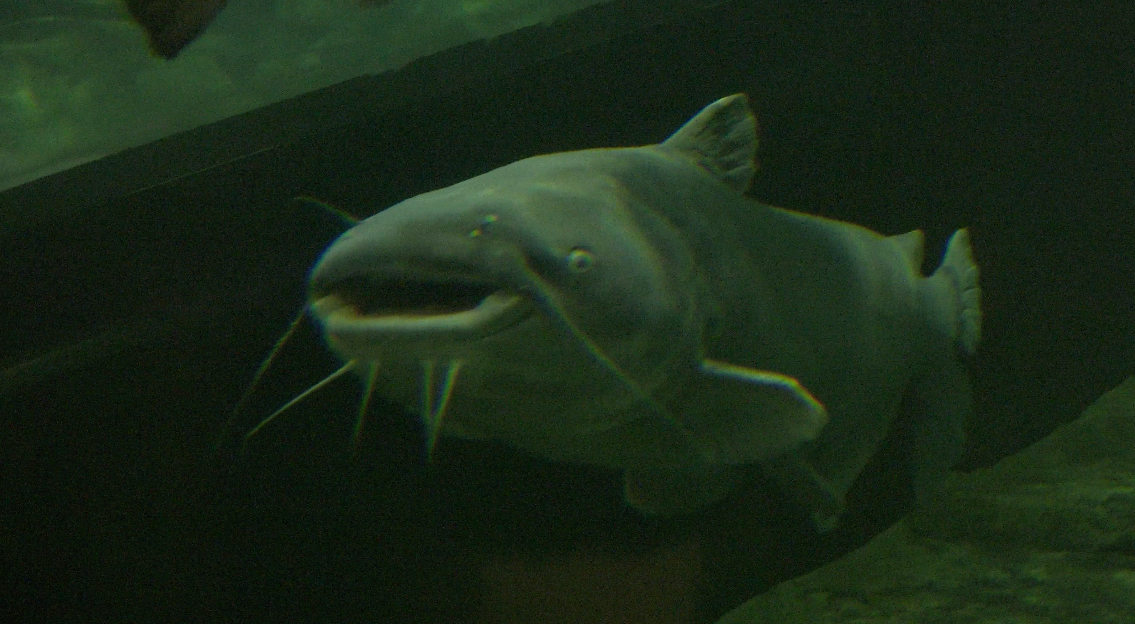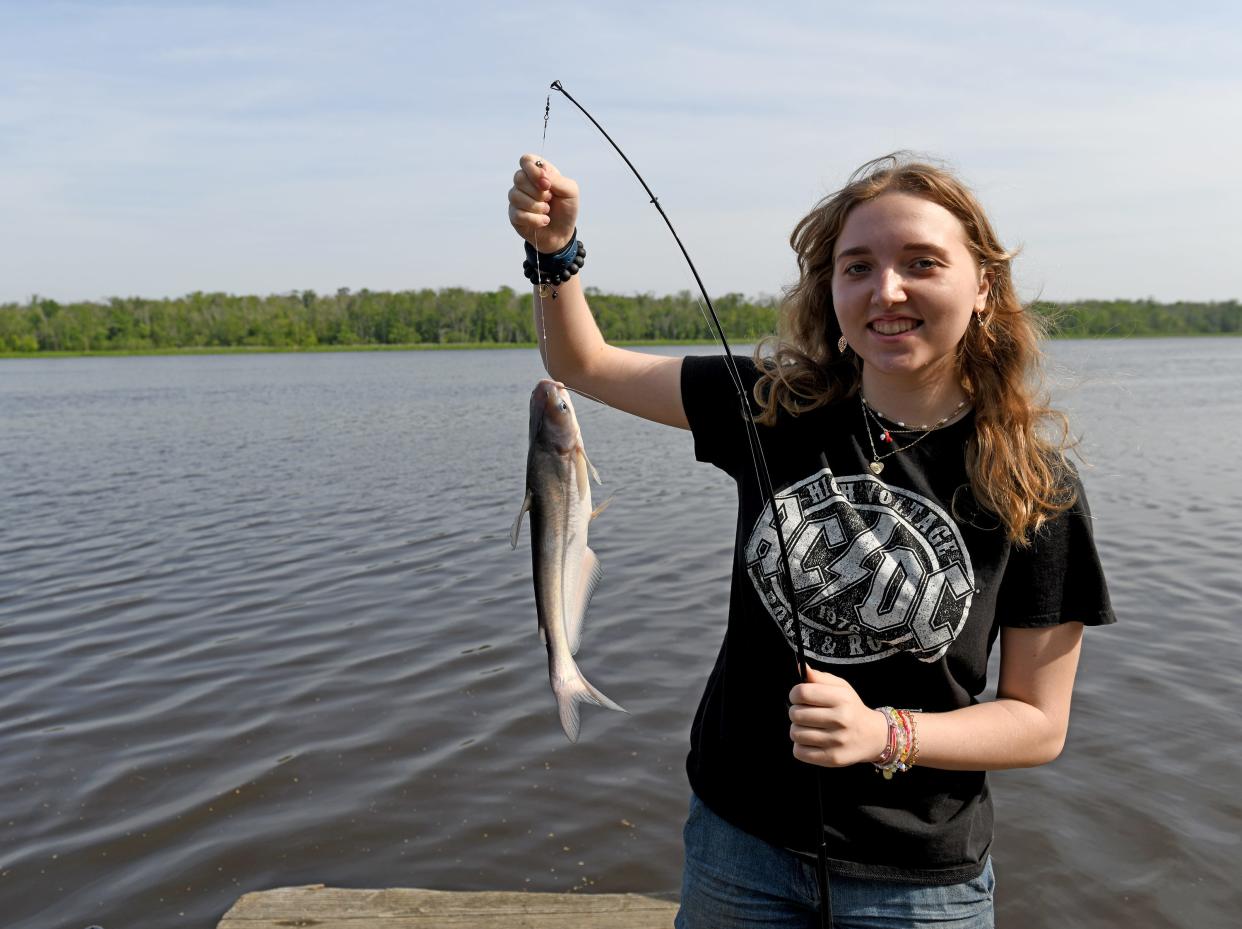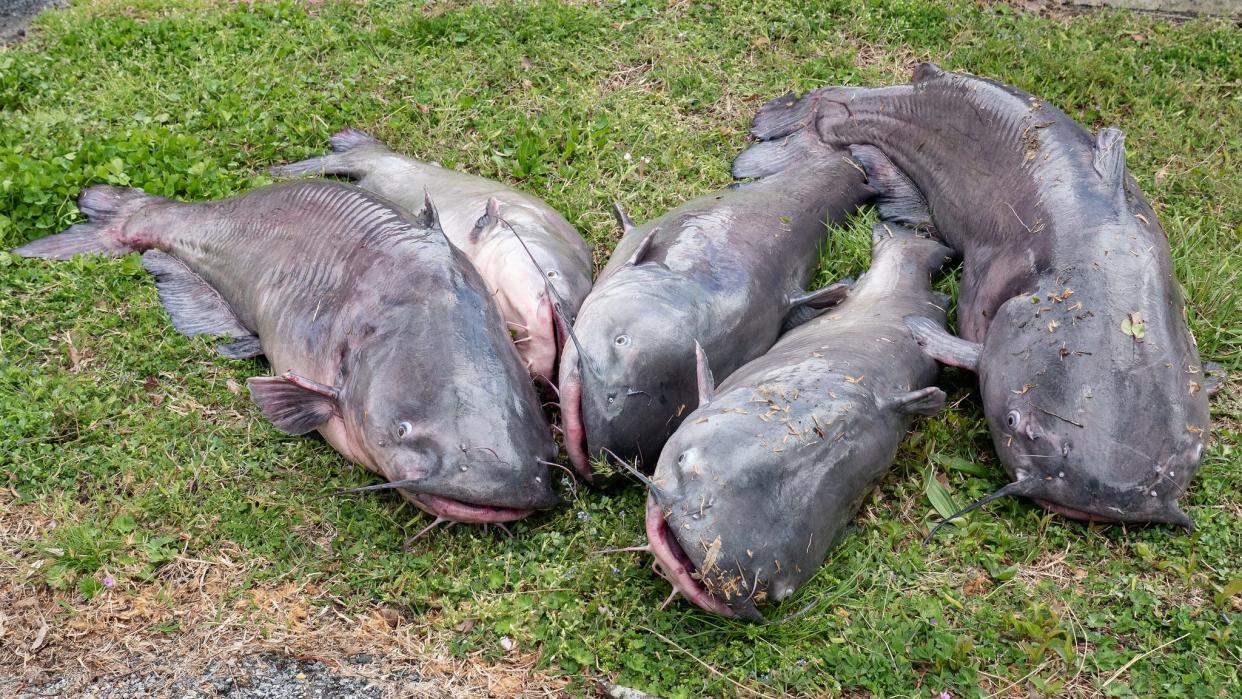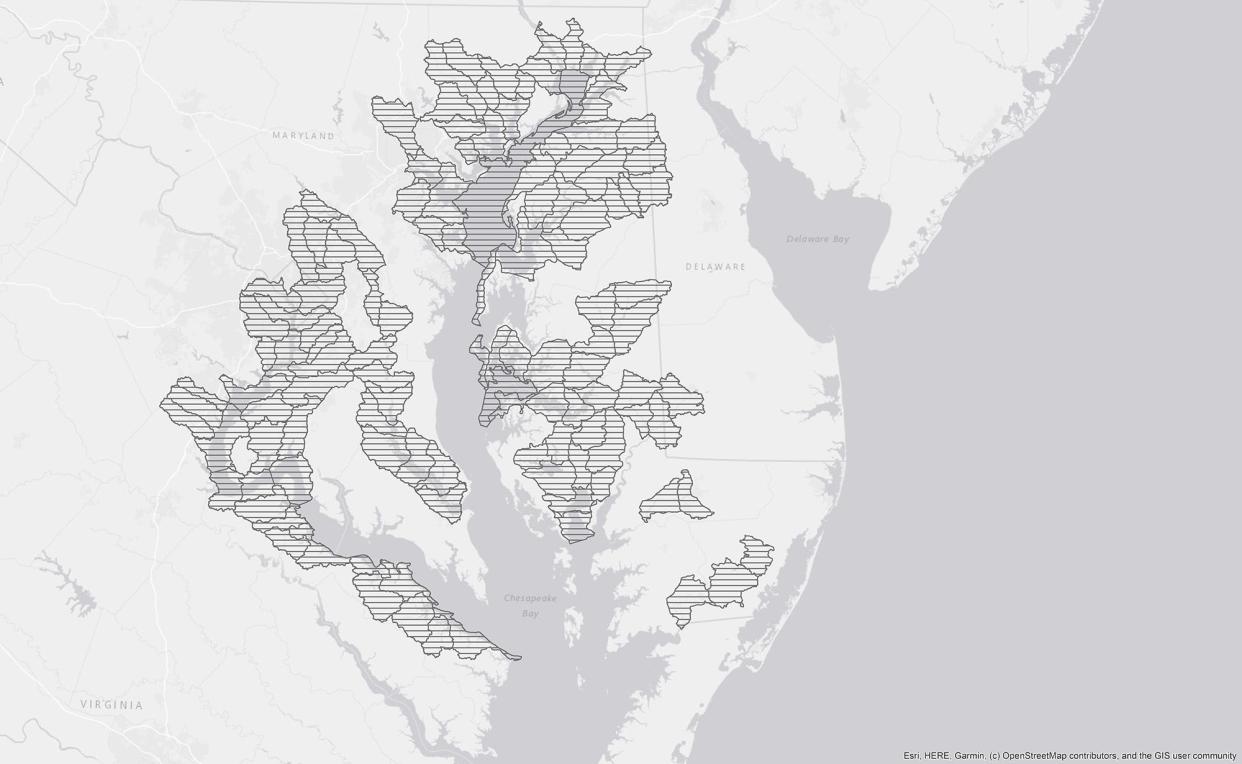Blue catfish are invading Maryland waters: How to identify them, catch them and more
Blue catfish are invading Maryland waterways and posing a serious threat to native species.
Yet, how is it that one species of slate blue-bodied fish can be so detrimental to the Chesapeake Bay ecosystem?
Whether you're looking to catch and cook a blue catfish or simply learn more about their existence, here's everything you need to know about how to properly identify one, the history of this invasive species and more.
BLUE CATFISH RECIPE: Would you eat blue catfish? Try this recipe to help the Chesapeake Bay
When did blue catfish first call Maryland home?

Blue catfish, a highly migratory invasive species also referred to by their scientific name as Ictalurus furcatus, are popping up all over Maryland rivers. In some American river systems, blue catfish are considered just another fish. However, in Maryland, they are a nuisance to most anglers and fisheries.
Blue catfish were first introduced in Virginia in the 1970s for recreational fishing, before reaching Maryland waters — where they quickly became abundant — in the 1990s and 2000s.
Scientists believe the wet years of 2018 and 2019 enabled them to spread throughout the upper Chesapeake Bay, according to the Maryland Department of Natural Resources (DNR). Today, they occupy most of the Chesapeake Bay’s river systems across Maryland and Virginia’s Eastern and Western Shores.
ENDANGERED SPECIES: Horseshoe crabs, which have suffered steep declines, get big new endangered species push
How to properly identify a blue catfish

Blue catfish are slate blue in color and white-bellied, with a flat dorsal fin and smooth skin that lacks scales. This invasive fish is a member of the bullhead catfish family, and capable of living in both fresh and brackish water due to their ability to tolerate higher salinity.
Blue catfish also have a forked tail and four pairs of black whisker-like barbels around their mouths, hence their name. While adults usually grow to be less than 2 feet long, they can grow to be 5 feet and weigh more than 100 pounds, according to NOAA Fisheries.
BLUE CRABS: Chesapeake Bay blue crab numbers show slight rebound. How will it impact prices
What do blue catfish eat?

Thanks to their large appetite and opportunistic and predatory nature, blue catfish are outcompeting native fish — such as white catfish — for both food and habitat. As bottom feeders, their diet varies.
As a result, blue catfish significantly disrupt the balance of the ecosystems they enter by directly targeting species of economic value and conservation concern, reported the DNR.
Blue catfish are known for preying upon blue crab, American eel, small crustaceans, crayfish, clams, mussels, a variety of smaller fish such as menhaden, herring and many other ecologically important species.
ROCKFISH REGULATIONS: Emergency rockfish regulations imperil Maryland fishing seasons: What to know
You've caught a blue catfish — now what?

You're fishing and reel in a squirming blue catfish — now what? Most Marylanders will be happy to know that this invasive species is rather tasty and nutritious, and can be easily found in most nearby waterways.
In addition, there is no offseason nor creel limit for blue catfish or any other invasive species, according to the DNR. For this reason, the DNR urges anglers to kill all blue catfish they catch due to the damage they cause to the Chesapeake Bay ecosystem.
Or, rather than disposing of each blue catfish they catch, anglers can also do their part to help the environment by choosing to eat them, freeze them for future use as cut bait, or use them as fertilizer.
SALISBURY HOUSING COMPLEX: Salisbury City Council, mayor at odds over troubled housing complex. Here's why.
Olivia Minzola covers communities on the Lower Shore. Contact her with tips and story ideas at ominzola@delmarvanow.com.
This article originally appeared on Salisbury Daily Times: All to know about blue catfish, an invasive species in Maryland waters
